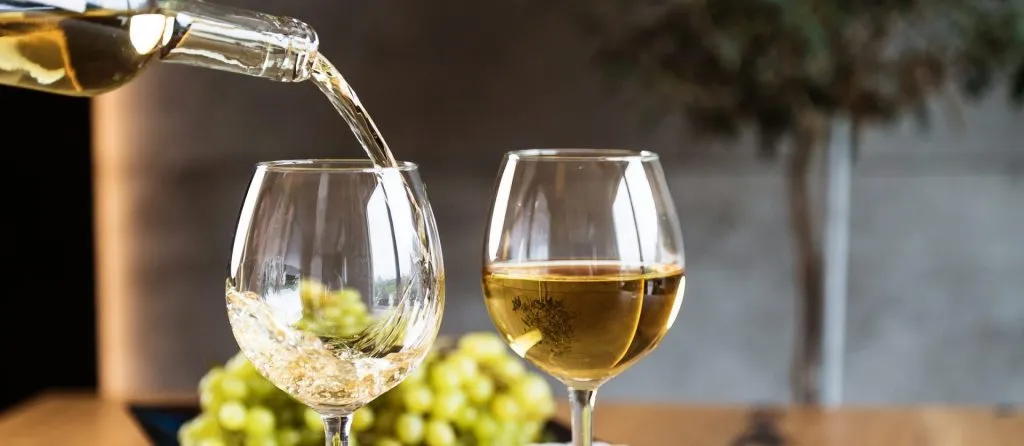Good wine goes hand in hand with great food. In fact, they go together so well it’s sometimes hard to imagine having one without the other. Here are some useful tips on pairing food with wine, ranging from some very basic first steps to the more specific pairings of different types of food.
1. Harmony or contrast
Pairing food and wine is a lot like creating a piece of art. Any knowledgeable artist will tell you the two basic principles by which you create a balanced composition are harmony and contrast. In art, this would mean you can combine let’s say a bright red surface with one that is also red but perhaps a bit darker. That would be harmony. On the other hand, you can also balance the bright red surface with a yellow one to create a contrast.
When you apply this theory to a culinary pairing it means you either look for a wine that tastes similar to your selected meal (harmony) or one that is the exact opposite (contrast). For instance, a cream sauce, which is mostly sweet and fat, will create a nice contrast with wine that has a slightly pronounced acidity, such as a Sauvignon Blanc. On the other hand, a creamy Chardonnay with lower acidity will create a pairing that is harmonious. In the end, they both give good balance and can be equally delicious, depending on your personal taste.
2. A Few Basic Rules
Before we head forward to the more specific pairings, here are some basic guidelines you should keep in mind when you’d like to choose a wine that will go well with your food.
– The wine should have more acid than the food
– The wine should be sweeter than the food
– The wine should have the same flavour intensity as the food
– Red wines pair best with strongly flavoured meats
– White wines pair best with lighter meats
– Bitter wines create a nice balance with fat
– It’s better to match the wine with the sauce than with the meat
– White, Sparkling and Rose wines usually create contrasting pairings
– Red wines usually create harmonious pairings
3. Wine and Cheese
The first rule of thumb is to look for a wine of equal intensity than the cheese. Intense wines with higher alcohol content call for intense cheeses and vice versa. That being said you should always pair a bold red wine with a slice of aged cheese. A nice example of this would be a pairing of Cabernet Sauvignon and Parmesan. The key, in this case, is to counteract the fat in the cheese with the tannins in the wine.
The second rule of thumb is to pair funky cheeses, such as blue-veined and stinky ones with wines that are sweet. Unusual as this may seem it actually works. The sweetness of the wine balances the funk of the cheese and gives an overall creamy sensation. One example would be a sweet Traminer with some super funky Italian Gorgonzola.
Another trick is to pair sparkling wines with creamy and sticky cheeses as they tend to dissolve the cheese and clear away the stickiness.
That being said it’s usually hard to miss if you pair cheese and wine from the same place (e.g. Slovenian cheese + Slovenian wine), so if all the above baffles you, just keep this in mind and you’ll be fine. And if for some reason that is not an option, you can always choose a firm nutty cheese such as Emmentaler and it will go well with almost anything.
4. Wine and Spices
Wine and spices should be matched on the principle of harmony. The key is to pair the aroma of the dominant spice with a wine that has that same aroma. For instance, a highly aromatic sweet basil goes perfectly with a Muscat or a Riesling. Tarragon, on the other hand, can do wonders with Chardonnay since it is more earthy.
Chardonnay also pairs well with shallots and turmeric. While Riesling, in addition to being a great pair with basil, pairs great with a number of different spices, including ginger, Aleppo pepper, horseradish, caraway, sage, fenugreek and allspice.
Rose is also a type of wine that pairs well with an array of spices, all though admittedly not as many as Riesling. Among them are lavender, shiso, black pepper and cumin. The last two make an even better match if the Rose is sparkling.
Another interesting choice for pairing with spices is Traminer. It does particularly well with ancho pepper, fenugreek, black cardamom and caraway.
5. Wine and Meat
Though it is usually best to match the wine with the sauce here are some tips on getting it right according to a specific type of meat.
For beef that is more on the lean side, such as an Eye of round steak or a sirloin tip side steak, choose a light to medium-bodied red wine that has a slightly higher acidity. Blaufränkisch and Merlot are good examples. For beef that’s more fatty, such as T-bone steak, you should choose a bolder, full-bodied red with more tannin. A good example is the Cabernet Sauvignon. The tannin in the wine will help neutralize the fat of the meat and balance your meal. Veal, on the other hand, is far more delicate so you can pair it with white and Rose wines.
For Lamb, choose wines that are a bit more delicate. Medium bodied reds generally make a good pair. However, if you prefer a bolder, full-bodied wine, go for one that has a tad less tannin than what is usual. You should keep in mind though that lamb takes on the flavour of the sauce really well. This means that if you’re having your lamb in a sauce you should pair the wine accordingly.
Poultry goes well with the number of light as well as rich white wines, Rose, and even light-bodied reds. Some good examples include oaked Chardonnay and Riesling. The latter works especially well if the meat is darker, such as a Duck. As for the reds, a good choice for most poultry is a delicate Pinot Noir. A good rule of thumb here is the lighter the meat, the lighter the wine and vice versa. As with lamb, you should also pay attention to the sauce.
In general, the pairing of pork is similar to poultry. You should choose light to medium-bodied reds, such as a Pinot Noir. You can also go for a fresh white such as Riesling. If you’re having a Pork Goulash an excellent pair would be a Blaufränkisch. Always pay attention to the sauce.
6. Wine and Fish
Lean fish such as Branzino and Sole go well with fresh white wines, especially sparkling wines. Fish that are a bit denser, such as Hake and Trout should be paired with aromatic medium-bodied or oaked full-bodied whites. Chardonnay or a very dry Riesling are 2 good examples. Meatier, steak-like fish, such as Tuna and Salmon make good pairings with rich whites and lighter reds, such as Oaked Chardonnay, Dry Rose and White Pinot Noir.
Fish that are very salty such as Anchovies, Sardines, Herring and Mackerel also make good pairs with a number of different wines. These include sparkling wines, dry Rose and dry Riesling.
7. Wine and Pasta
Pairing wine and pasta is all about the sauce. For tomato-based sauces choose medium-bodied reds. If the sauce has more meat you can also pair it with a more full-bodied red but keep in mind that it needs to have enough acid to harmonize with the sourness of the tomatoes. Some good choices are Zinfandel, Chianti and Nero d’Avola.
If your sauce is based on cheese, go for full-bodied whites or light-bodied reds. Pinot Noir, Ribolla Gialla and Chardonnay are all good examples.
If you’re having pasta with seafood, light to medium-bodied whites makes a nice match, such as Pinot Grigio and Muscadet.
For pesto use a light-bodied white that is equally herbaceous as your sauce, such as Sauvignon Blanc. Light bodied whites are also a great match for vegetable-based Primavera style pasta. Slovenia’s native Zelen and Pinela are two excellent choices for both.
*
This brings us to the end of our post on pairing food and wine. If you’d like to learn more we recommend you go to a Wine Tasting. Not only will you be able to try all sorts of different wines, but the local wine expert will also be happy to help with any questions you may have on the subject.









